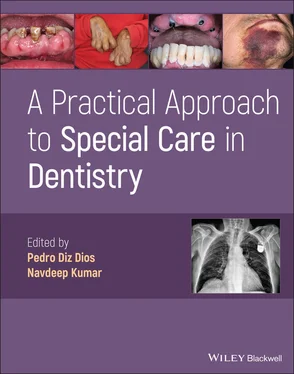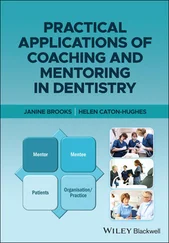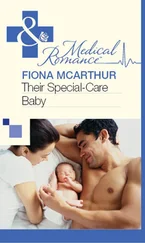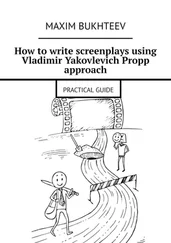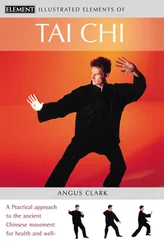A Practical Approach to Special Care in Dentistry
Здесь есть возможность читать онлайн «A Practical Approach to Special Care in Dentistry» — ознакомительный отрывок электронной книги совершенно бесплатно, а после прочтения отрывка купить полную версию. В некоторых случаях можно слушать аудио, скачать через торрент в формате fb2 и присутствует краткое содержание. Жанр: unrecognised, на английском языке. Описание произведения, (предисловие) а так же отзывы посетителей доступны на портале библиотеки ЛибКат.
- Название:A Practical Approach to Special Care in Dentistry
- Автор:
- Жанр:
- Год:неизвестен
- ISBN:нет данных
- Рейтинг книги:3 / 5. Голосов: 1
-
Избранное:Добавить в избранное
- Отзывы:
-
Ваша оценка:
- 60
- 1
- 2
- 3
- 4
- 5
A Practical Approach to Special Care in Dentistry: краткое содержание, описание и аннотация
Предлагаем к чтению аннотацию, описание, краткое содержание или предисловие (зависит от того, что написал сам автор книги «A Practical Approach to Special Care in Dentistry»). Если вы не нашли необходимую информацию о книге — напишите в комментариях, мы постараемся отыскать её.
Learn to treat dental patients with disabilities or who are medically compromised A Practical Approach to Special Care in Dentistry
A Practical Approach to Special Care in Dentistry
A Practical Approach to Special Care in Dentistry — читать онлайн ознакомительный отрывок
Ниже представлен текст книги, разбитый по страницам. Система сохранения места последней прочитанной страницы, позволяет с удобством читать онлайн бесплатно книгу «A Practical Approach to Special Care in Dentistry», без необходимости каждый раз заново искать на чём Вы остановились. Поставьте закладку, и сможете в любой момент перейти на страницу, на которой закончили чтение.
Интервал:
Закладка:
2 How would you manage the dental caries? Figure 2.1.3 Mandible: caries in teeth #75, #84 and #85; calculus on the lingual aspect of lower incisors; buccal enamel demineralisation.Reduce caries risk – dietary analysis, educate parents, reinforce oral hygiene, consider fluoride supplementationAcclimatise the patient further – he has already demonstrated improved compliance by allowing bitewing radiographsReattempt an orthopantomogram and consult with an orthodontist as the patient is at a mixed dentition stageIf compliance is limited, plan to allow deciduous teeth to exfoliate if they are asymptomatic and focus on the permanent dentitionPlace fissure sealants and attempt restorations (temporary restorations can be recommended and any local anaesthetics avoided for the patient to get used to)
3 The patient asks you to repair the fractured incisal tip #21 as he does not like its appearance. What factors would you need to consider? Figure 2.1.4 Right and left bitewing radiographs: mixed dentition; caries in #75, #84 and #85.Further information regarding how and when the fracture occurred, and any related symptomsCapacity of the patient to understand what is plannedIn relation to previous successful dental filling placement at the age of 9 years old:Where and how it was carried out?How co‐operative was the patient?What behavioural modification tools were used?In relation to unsuccessful treatment a year ago:Why was clinical holding used, i.e. was it to assist with uncontrolled movements?Was it agreed and consent in place?Why did it go wrong?With this information, confirm the modified plan
4 The patient's mother has also noticed that her son makes a loud noise with his teeth predominantly at night – what could be the cause and why?Sleep and day bruxism has been linked to ADHDIt may also be a side‐effect of the medications used to manage the condition, including methylphenidate
5 What other factors could be contributing to tooth surface loss?Xerostomia due to methylphenidateDietary acid/erosion due to high sugar and acid intake
6 What factors are considered important in assessing the risk of managing this patient?SocialIrregular attender, dental anxietyLearning disability, poor compliance and toleranceSelf‐injurious behaviourAvailability of escortMedicalPotential side‐effects associated with methylphenidate include headache or nauseaSigns of trauma/self‐harmDentalBruxism leading to tooth surface lossIncreased risk of caries due to xerostomia induced by methylphenidateHigh caries rateCariogenic dietHistory of dental trauma
General Dental Considerations
Oral Findings
Poor oral hygiene due to reduced attention span and compliance for tooth brushing
Increased caries and periodontal disease
Bruxism
Higher risk for dental/oral trauma due to inattention, impulsivity
Adults are at potentially high risk for periodontal disease and oral cancer due to high rates of smoking
Medication‐related side‐effects including xerostomia, dysphagia, dysgeusia, bruxism, angio‐oedema, glossitis and orofacial dyskinesias
Dental Management
Compliance for the delivery of dental care can vary ( Table 2.1.1)
Treatment should be modified based on reassessment of the patient on the day of the appointment
Section II: Background Information and Guidelines
Definition
ADHD, once called hyperkinesis or minimal brain dysfunction, is a disorder that interferes with the ability to persist in a task and to exercise age‐appropriate inhibition. It affects 3–5% of children and is twice as common in boys as in girls. It often continues into adolescence and adulthood.
Aetiopathogenesis
The main cause is unclear
Physical triggers: hyperkinetic syndrome, brain damage, low intelligence, anxiety states, drug abuse, high intake of refined sugar and food additives (e.g. tartrazine sensitivity)
Social triggers: child–parent relationship, rejection or overprotection, inconsistent discipline, lack of parental love, marital disharmony, depression, institutionalised, excessive demands from school
Evidence for familial predisposition
Clinical Presentation
ADHD is characterised by inattention and hyperactivity and/or impulsivity, which are excessive, long‐term and pervasive
Signs of inattention include:Becoming easily distracted by irrelevant sights and soundsFailing to pay attention to details and making careless mistakesRarely following instructions carefully and completely Table 2.1.1 Considerations for dental management.Risk assessmentInappropriate behaviour with uncontrolled movements or aggressionLack of attention with tendency to stand up suddenly and explore surroundings/leave the clinic roomThis may cause distress and potential injury for staff and the patientContamination of surfaces may occur as the patient explores and examines the contents of surgery and cupboardsDental treatment may be considered an exhausting experience for both the patient and the dental teamPotential interaction of dental local anaesthetics with medications used to manage ADHDCriteria for referralPatients with very disruptive behaviour who may require pharmacological adjuncts to enable dental treatment to be undertaken safely may be treated in specialist dental servicesAccess/positionEnsure an appropriate escort is availableConsult parents/escort as to the most suitable time of day to arrange an appointmentDo not interrupt meals or prescheduled activitiesAppointments need to be short with no waiting time before the patient is seenCommunicationEnsure that language and sentences are kept short and simpleUse visual aids such as pictures or videos so that parents can run ‘training sessions’ at home regarding the process of visiting the dentistPsychological support from the patient's care team may also be availableCapacity/consentExplanation of the planned procedure should be provided using simple terminology and short sentencesParents/guardians (for children)/appropriate escorts should be involved in the consent processAnaesthesia/sedationLocal anaesthesiaThe administration of local anaesthesia solutions containing vasopressors, such as levonordefrin, epinephrine or norepinephrine, to patients receiving tricyclic antidepressants or monoamine oxidase inhibitors should be avoided if possible as it may produce severe, prolonged hypertension and tachycardiaIn situations when concurrent therapy is necessary, careful patient monitoring is essentialPatient may need manageable reassurance‘Tell–show–do’ may be of value especially when applied by a dentist trained in child psychologyIf cannot be given safely, alternative approaches should be consideredSedationOrally administered agents, such as diazepam, should be avoided as they exacerbate rather than depress overactivityRelative analgesia using nitrous oxide and oxygen may be usefulAlthough intravenous sedation may be used, the success of sedation is unpredictable, the outcome of previous sedations being the best prognosis indicatorGeneral anaesthesiaPatients requiring complex dental treatment and those uncontrolled with sedation may be treated with general anaesthesiaAdmission to hospital may be problematic and a single side room may be requiredDental treatmentBeforeEnsure that a risk assessment has been completed and the team has been briefed regarding any disruptive/aggressive behaviourIf appropriate, consent and arrangements for safe and approved clinical holding need to be formally recorded and reviewed on the day of treatmentRemove all equipment and items from the surgery which are not neededDuringAdditional caution when performing invasive proceduresTerminate treatment if the patient becomes distressed or there are safety issuesAfterGive positive reassuranceRe‐evaluate next stepsDrug prescriptionIdiosyncratic reactions to diazepam and midazolam have been observedEducation/preventionMost patients need assistance to brush their teethElectronic toothbrushes are often not well tolerated due to the vibration and soundImplement fluoride supplementation in line with dental caries riskDietary advice to reduce caries riskMore regular reviews and shorter recall intervals advisableLosing or forgetting things such as toys, pencils, books and tools needed for the task
Читать дальшеИнтервал:
Закладка:
Похожие книги на «A Practical Approach to Special Care in Dentistry»
Представляем Вашему вниманию похожие книги на «A Practical Approach to Special Care in Dentistry» списком для выбора. Мы отобрали схожую по названию и смыслу литературу в надежде предоставить читателям больше вариантов отыскать новые, интересные, ещё непрочитанные произведения.
Обсуждение, отзывы о книге «A Practical Approach to Special Care in Dentistry» и просто собственные мнения читателей. Оставьте ваши комментарии, напишите, что Вы думаете о произведении, его смысле или главных героях. Укажите что конкретно понравилось, а что нет, и почему Вы так считаете.
